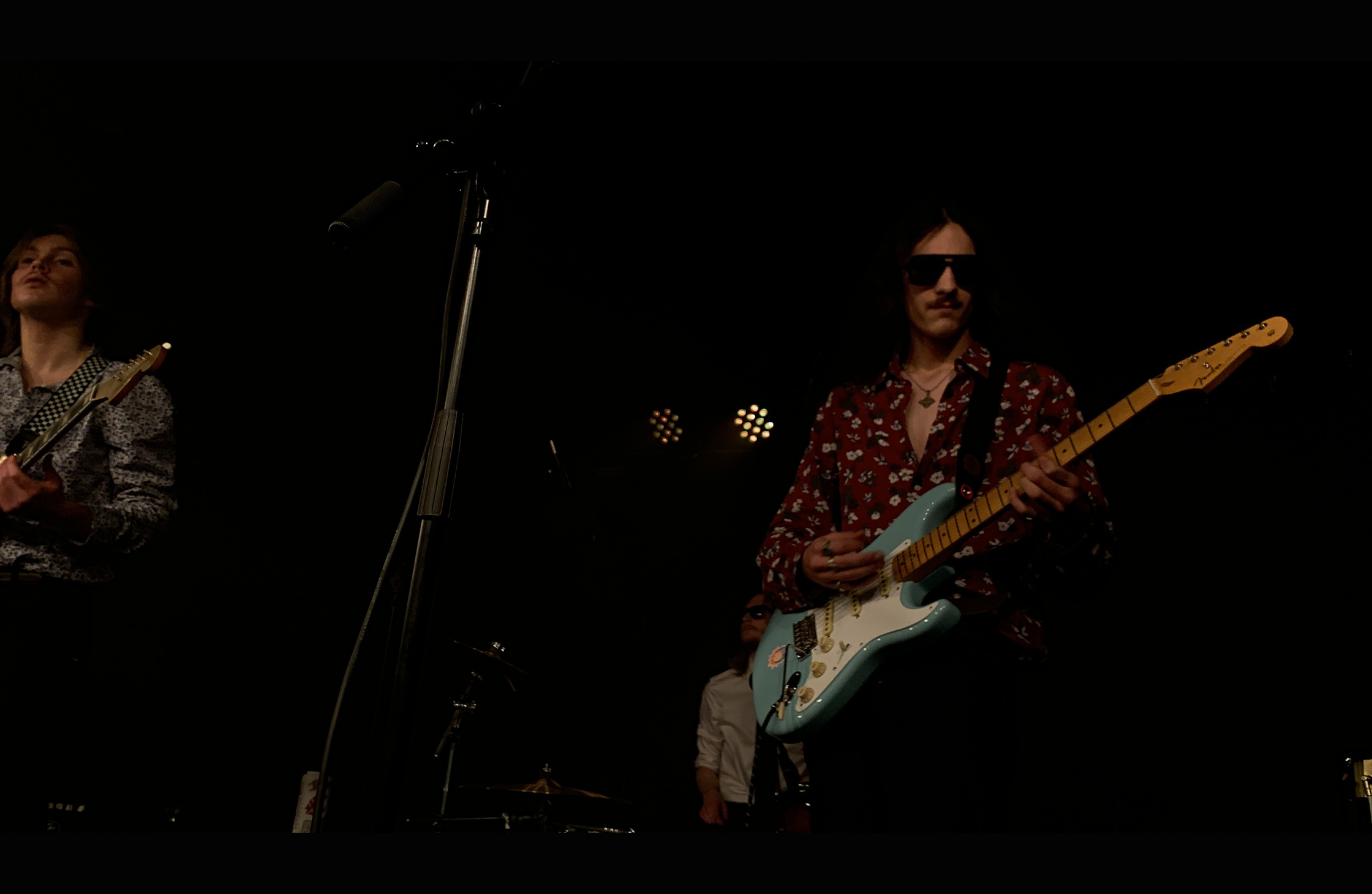Luke Vesely on lead guitar for easyday onstage at Ray’s Golden Lion on February 9, 2024. Photo by Karlee Van De Venter.
Four Tri-Cities musicians speak on AI-generated media
Generative AI is dominating our technology. Every day, the average person is exposed to AI-generated content — whether it’s written, visual, or auditory — over and over again.
In March, Forbes reported that 71% of social media images are now AI-generated.1 Commercials constantly advertise the latest system, and many standard computer programs have put chatbot access front and center.
With such rapid growth over the past year, almost all industries and the workers within them are left playing catchup. They have to evolve to a new standard while simultaneously sorting through ethical stances on the use of generative AI.
The creative sphere is particularly impacted. People making money with their passion and creativity are suddenly seeing their entire industry change. Fans of any art have to decide what boundaries they’ll draw and how much AI-generated content they want to consume.
It’s happening across the country, and Tri-Cities is no exception. The local music scene has been grappling with these decisions, especially lately. Posts are circulating among common show-goers stating that they won’t support local musicians that utilize AI-generated materials, including digital flyers.
But how do local artists feel about it?
Tri-Cities musicians on generative AI
Some artists have made explicit statements against generative AI and are actively promoting local options to use instead.
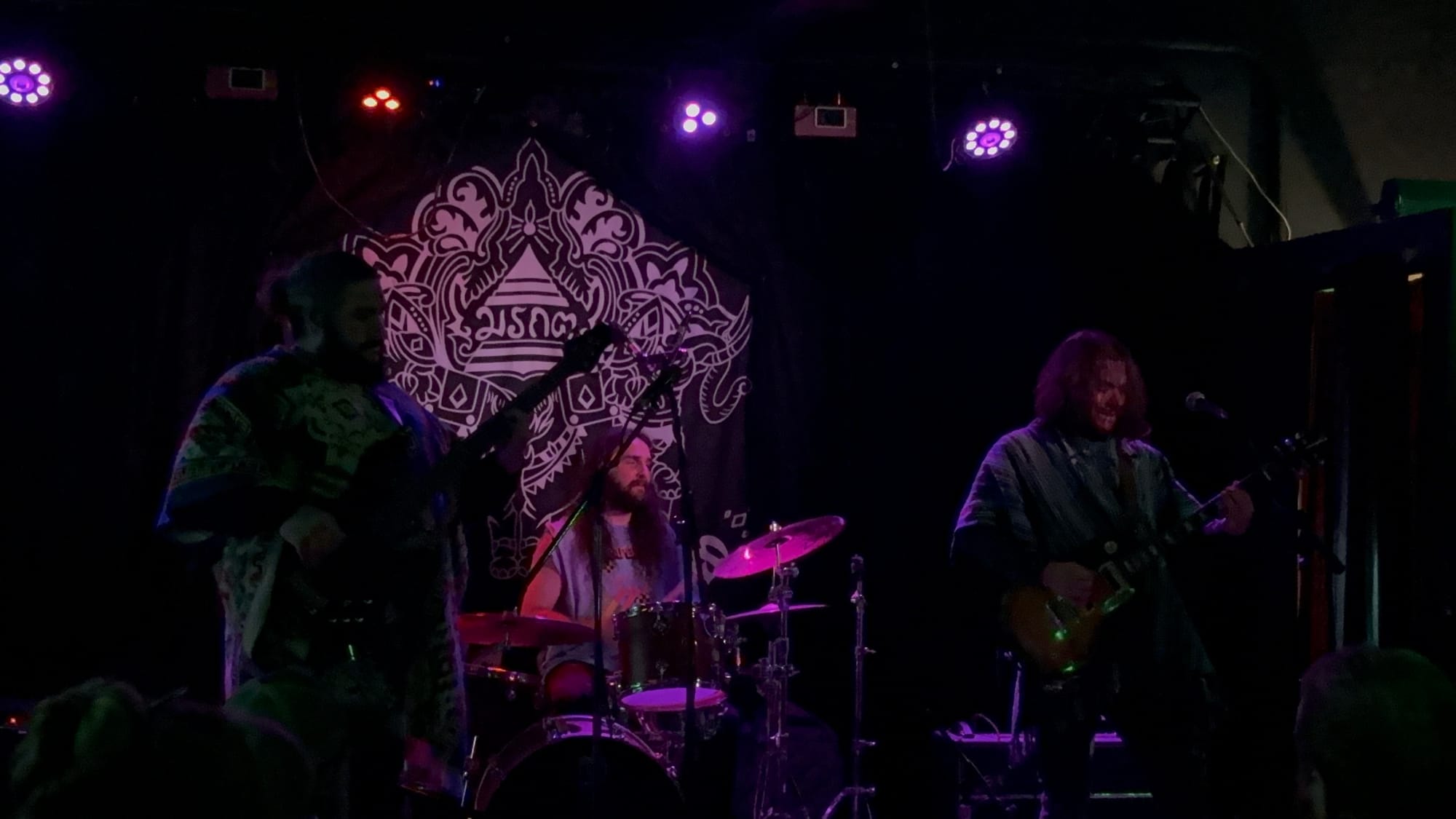
One such artist is Carson Garland. Originally from Tri-Cities, he’s currently based in Seattle and travels back to his hometown for gigs. Garland plays drums for Cadejos,2 a hard rock trio based here, and for Rice,3 a more classic rock trio that formed in Tri-Cities and relocated to Seattle. He also collaborates with Wabi Sabi from time to time,4 and occasionally releases solo projects, too.5
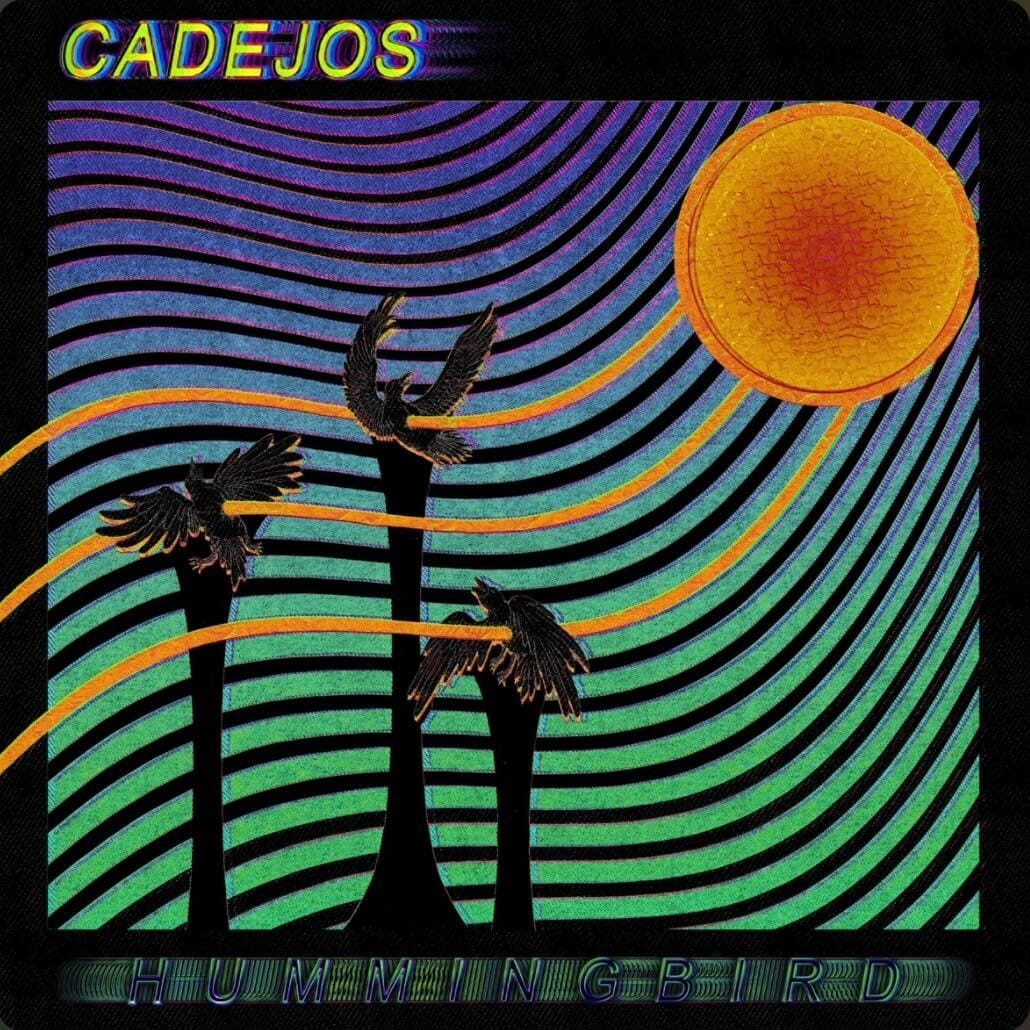
Cadejos released the EP Hummingbird on February 28 of this year.6 In the week leading up to the project’s release, the cover art was posted on the band’s Instagram in alternate colorways, counting down to the drop day.
After the EP was released, the cover art was posted again with a message shouting out their graphic designer, Ezra Stanfield, encouraging others to use real artists over generative AI.7
“Don’t use AI, use our guy,” it said on the band’s Instagram story.
In an interview, Garland said he was behind the post. He had been thinking a lot about artists using generative AI, and how opting for AI means you miss out on hiring an artist, learning their style, and going through the process together.
“You basically throw that entire experience away when you get onto a generative AI app,” Garland said. “Not only are you not supplying another artist's business, you are robbing yourself of the experience of making the artistic process more meaningful.”
Garland clarified that he’s not against artificial intelligence as a whole, and sees the benefit of using AI tools for certain processes. What he’s against is creating something entirely through generative AI.
So, how does it work? What is the difference?
AI versus generative AI
While the terms are often used interchangeably colloquially, there is a difference between traditional artificial intelligence and generative AI technology. As described by the Massachusetts Institute of Technology, the primary distinction between the two is their functionality.8 While traditional AI is reactive, analyzing data to provide insights, generative AI is proactive, creating a product based on learned patterns.
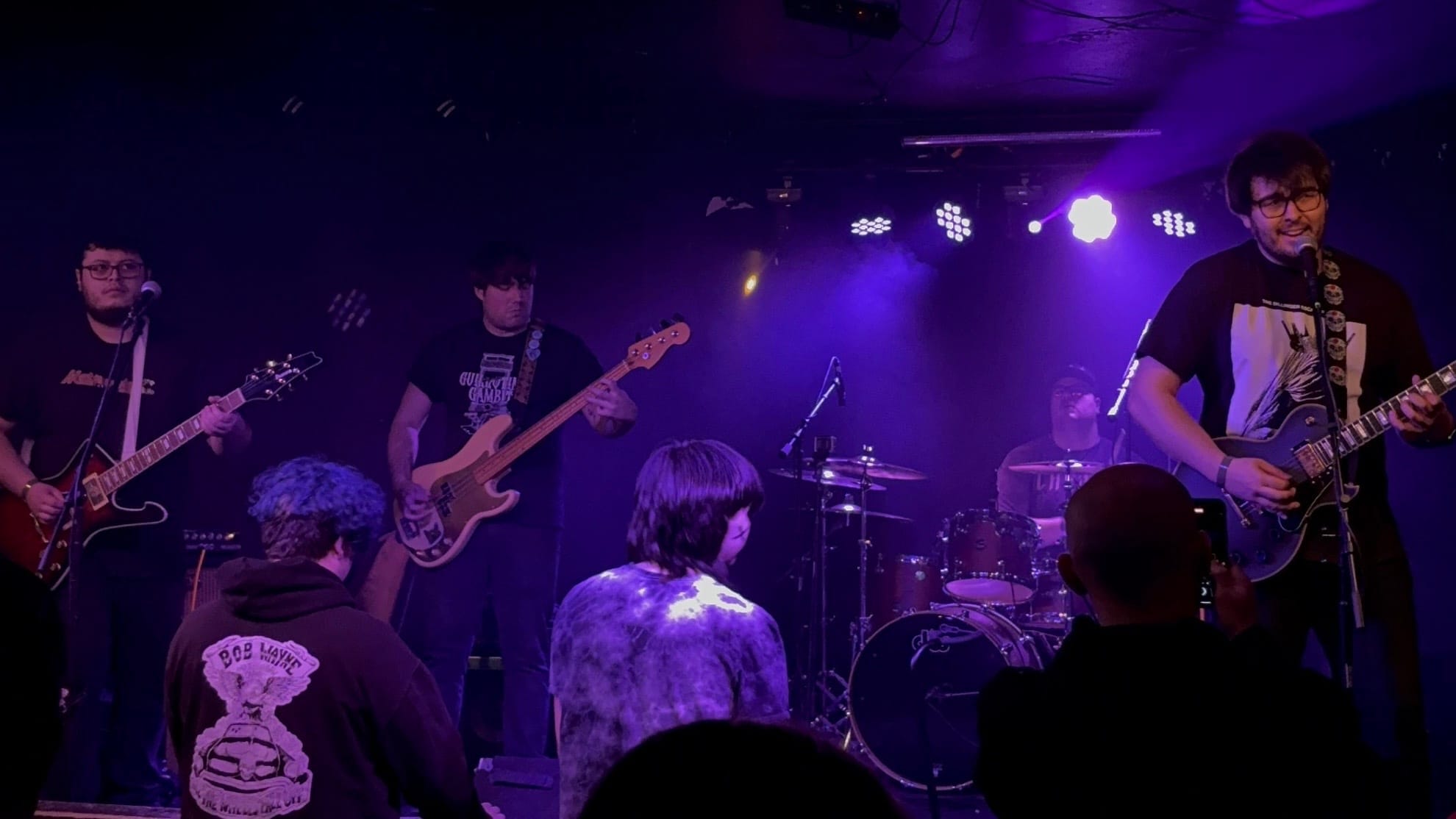
Caleb Warwick is a musician who grew up in Prosser. He plays guitar in Staring at the Sun, a four-piece alternative rock project, and by day, he’s a software engineer.9 His job involves a lot of web development and programming, specifically with science-based applications. Through this work, Warwick sees a lot of artificial intelligence.
He said there has been a recent boom in AI systems across the globe, and especially in the U.S. He has to be familiar with AI’s limitations, what systems are applicable for his work, and when to utilize the technology. While there are benefits to using AI, he says it’s really case-by-case.
But what’s clear to him is the boundary when it comes to using generative AI in place of creativity.
“To keep it short, it’s bad. It’s not a good thing,” Warwick said. “I am fully against generative AI being used in creative spaces that are used to generate what’s called ‘art’ instead of helping artists.”
Generative AI learns from billions of data points and uses them to generate an entire product. Both Garland and Warwick mentioned that real artists’ work is used to train generative AI systems, often without the artists’ knowledge or consent.
“Visual AI is just a representation of some plagiarized version of an actual artist,” said Garland.
Warwick claims that generative AI steals from real artists, creating something worse in the process.
“It’s only good if you’re using it in a way that is not a creative process,” said Warwick. “Because if you don’t have any ideas yourself, and you think putting your non-ideas into a generative AI program and outputting something, now you have an idea — that’s nothing. That’s effectively nothing. That’s not your creation. That’s somebody else’s creation, which the AI-generated output has effectively stolen from other artists without their permission.”
The final product is another reason Warwick chooses to stay away from generative AI in creative spaces. He thinks it shows a lack of creativity and a desire to save money at the detriment of the art. To him, that’s reason enough not to consume an artist’s material.
“You just effectively ruined any artistic credibility that you have,” Warwick said. “Even if you’re a musician that’s trying to just generate visual art or whatever, your credibility is just diminished, because you don’t value art. … Why should I listen to what you have to say? Why should I listen to your music?”
This guitarist and software engineer believes it’s important for himself, as an artist, to support artistic spaces.
Generative AI in graphic design
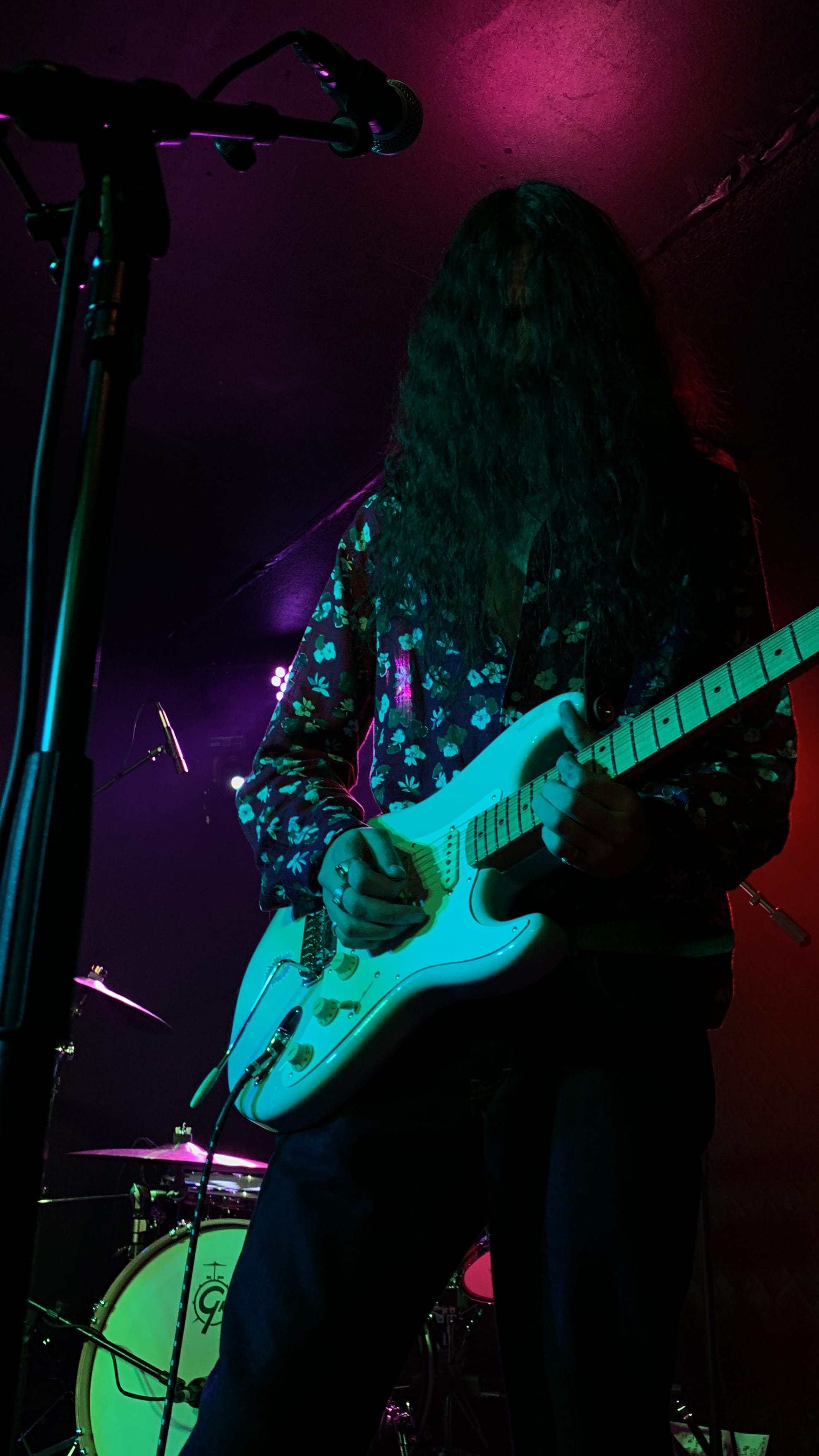
Luke Vesely is the lead guitarist of easyday, a four-piece indie rock band based in Tri-Cities.10 He’s also a graphic designer, designing most of the band’s materials himself as well as working for others.
He’s against generative AI in creative spaces, too, for various reasons. But one major reason, he says, is that AI-generated materials are missing the innate humanness that makes art special.
“What is art, if it is not your emotion? And how can a computer have emotion? It can’t,” Vesely said in an interview. “You write ‘Paint me something beautiful’ and it paints what it is told is beautiful, not what it thinks is beautiful.”
He says one of the major differences between human-created art and AI-generated materials is the fact that humans create something out of nothing, while generative AI creates something out of many existing somethings. He compared it to jungle juice at a frat party — cheap, dubious in origin, and unable to be something truly new.
Like Warwick, Vesely believes that artists who use generative AI are doing so because it’s easy and cheap. “People are not fast, but would the ceiling of the Sistine Chapel be as highly regarded if it were just AI-programmed and someone traced over it?” Vesely said. “And it took them a couple hours instead of four years?”
He said one of the biggest dangers of AI is the ease of access. It can easily morph into sheer reliance, and in turn, the devaluation of art we once considered special.
Over time, the art associated with a music release has gotten smaller and smaller. From the 12.5 x 12.5 inch standard of vinyls, to the 4.724 x 4.724 inch standard of CDs, to now just 3000 pixels on a digital release, cover art keeps shrinking. With this transition, Vesely says there is less appreciation for the complete release of a record, and all of the smaller choices that go with it. Some artists may want to make the music and then rush through the other creative decisions, but that’s not his style, “because the album is not just the music,” Vesely said. “The album is the whole experience. At least that’s what I believe."
To Vesely, every small decision reflects the music and the musicians behind it. If none of it mattered, all music would be released with blank covers. But, to him, it all conveys something. It allows fans to consider the musician’s approach in every detail. He spent hours creating the cover for easyday’s last album and even longer hand-drawing the font used.
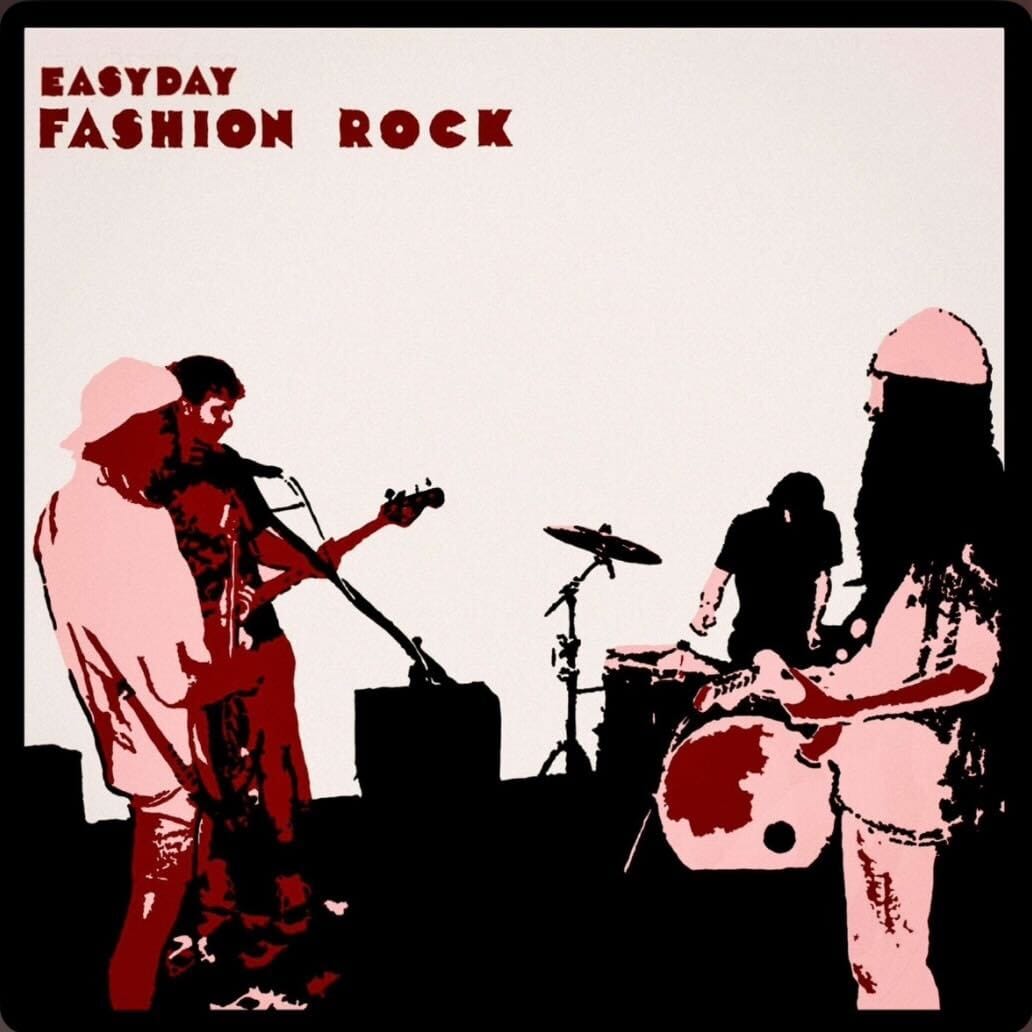
“There’s emotion in that; there’s frustration in that; there’s conscious decisionmaking,” Vesely said. “I think that those are powerful things. It’s no different than the way you’re playing a guitar solo. That’s a conscious decision of how they’re going to hear it.”
Warwick says artistic spaces are meant for humans, and when those communities are devoid of human art, it’s representative of greater issues. And, like Vesely, he argues that it devalues the existing art and the community.
Generative AI’s impact on community
One reason all three musicians oppose the use of generative AI in creative spaces is its detriment to the local community. While musicians have always had to fight through a slew of obstacles to see success, the digital age has introduced its own set of roadblocks.
Between the drastic drop in physical media sales, the small percentage earned from streams, decreased emphasis on smaller spaces, and an oversaturated field, it’s not easy to support yourself through music in the modern world.
Out of necessity, the Tri-Cities music scene is very community-focused, based on the testimonials of many local artists. Bands here thrive with the support of the scene, including other musicians and artists of all trades. Growing your local connections is necessary for success in our scene.
Seeing all of this firsthand, Garland, Warwick, and Vesely all consider it important to support the scene around them. Working with other bands and growing connections, as well as collaborating with artists from other mediums, supports the Tri-Cities music scene, not just their endeavors.
“The best thing you could do, in that case, is just support your local musicians, local visual artists, graphic designers, videographers, cinematographers, filmmakers, every single spectrum of art,” Warwick said. “When you use generative AI in any of those spaces, you’re not supporting the art that you love. You’re killing it.”
Warwick sees this as respect, as well as support, for his fellow artists and other creatives.
Vesely says there is danger in normalizing generative AI in the community. When most musicians know musicians and artists know artists, there are always many local options if you can’t do something yourself. He says the end product, too, is better when it follows this personal connection.
Garland says it's cooler to hire an artist than to complete a project entirely by yourself. Or, if money is a factor, to doodle something, even something quick, as long as it's human. Like Vesely, he believes that the more normalized generative AI becomes in the space, the more it’ll hurt the community.
“If artists can’t make money, I’m against it,” Garland said. “Artists have been screwed over for such a long time, and I vehemently want to be on the opposite end of anything that is trivializing making art.”
Embracing AI in creative spaces
But not all artists feel this way. Some are embracing the technology and integrating it into their artistic process.
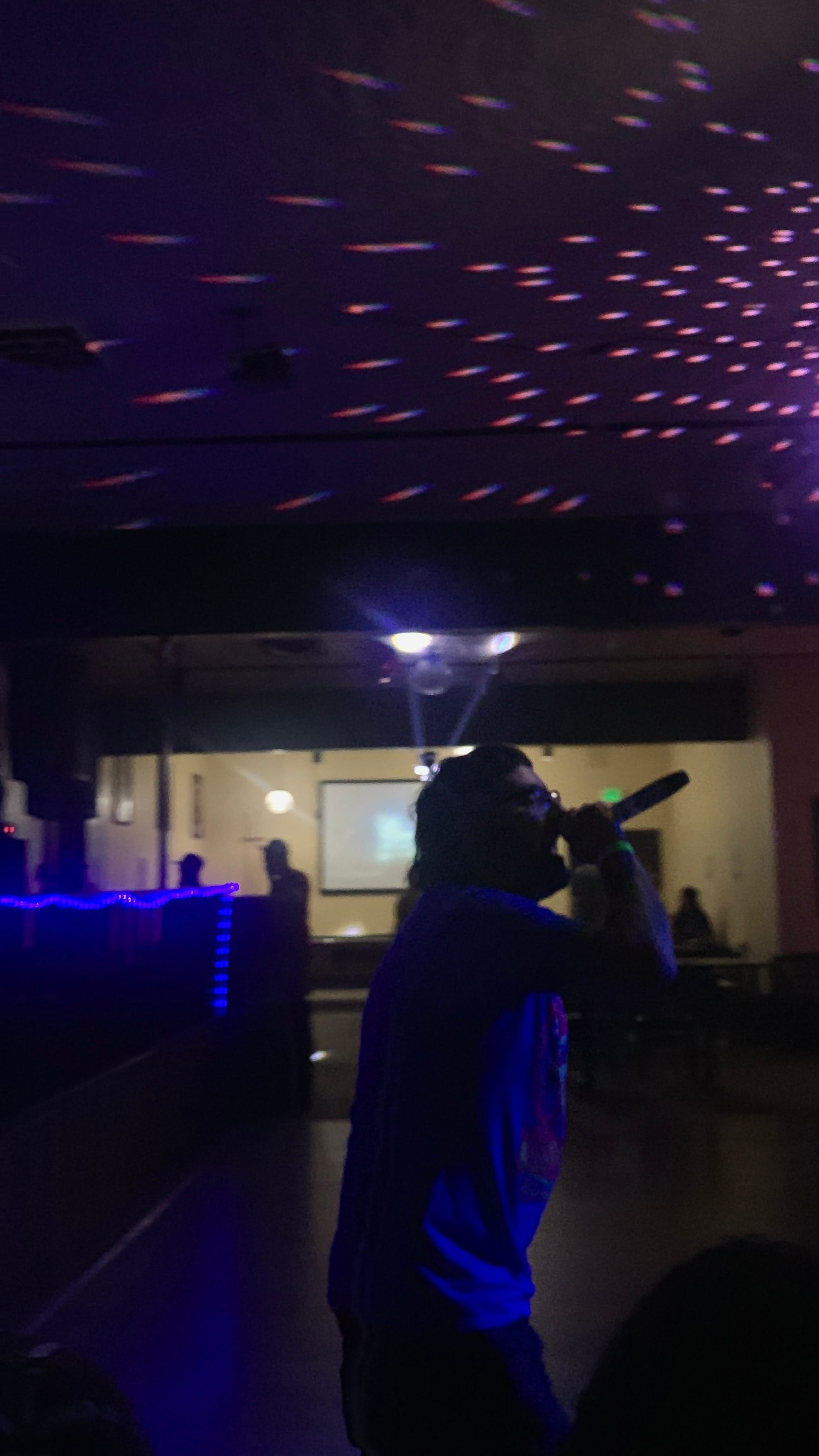
One such artist is Victor Navarrete, who raps under the stage name Tory North.11 Born and raised in Tri-Cities, he’s been making music for decades.
Like Cadejos, he released an EP this year. But unlike Cadejos, he opted for AI-generated cover art for his EP, When We Were Kids.12
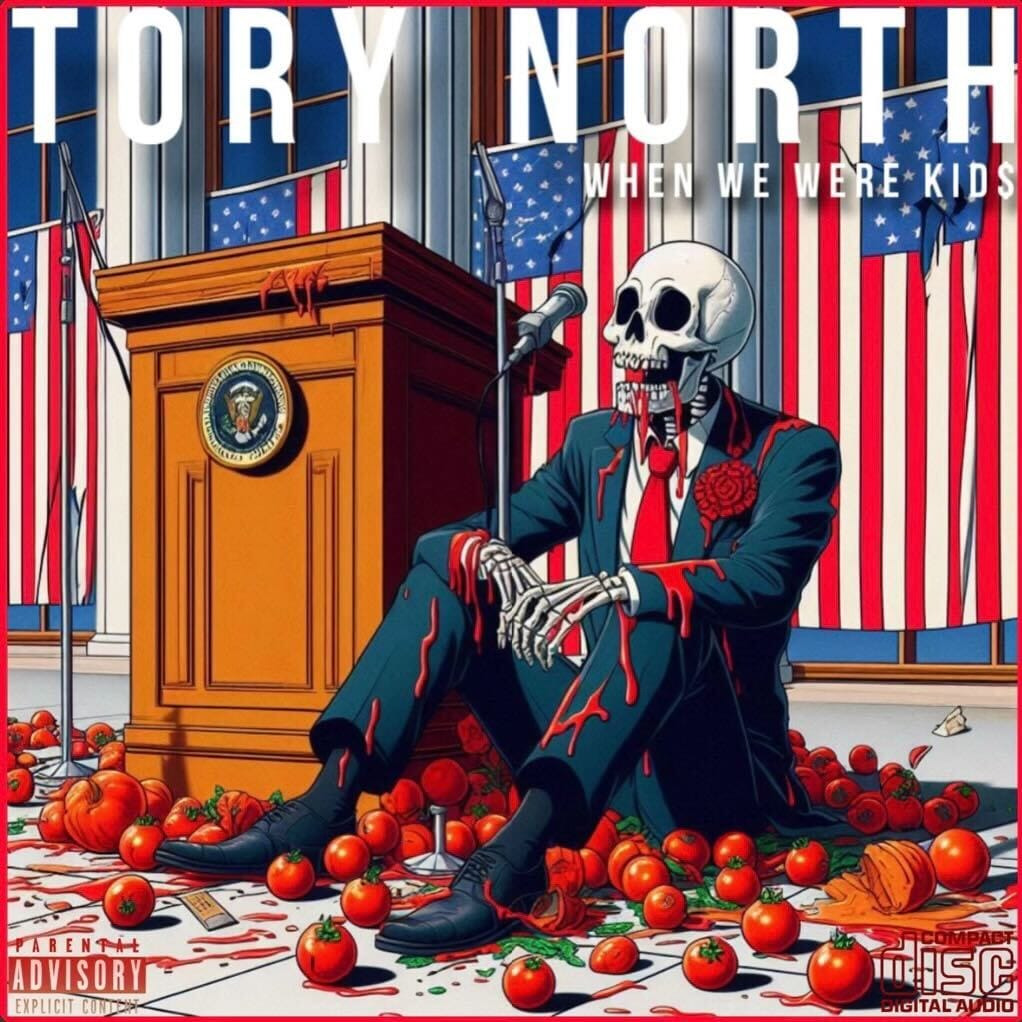
He has a few reasons for embracing AI-generated content. Like the other musicians presumed, he noted how easy it is to use generative AI programs and how cheap it is compared to human artists. But he also mentioned a more true-to-vision product.
“It’s just a lot easier for me to get my ideas into the real world,” Navarrete said. “I’ve worked with many graphic designers in the past, and a lot of times it ends up being their idea — their version of what you’re trying to do.”
The rapper says the key to getting your ideal end product is being as descriptive as possible, as if you were writing descriptions for the visually impaired.
While he believes there are plenty of potential issues with using generative AI in creative spaces, Navarrete says it's his approach that sets him apart. To him, it can be positive to use generative AI creatively, so long as it’s used as a tool. If the core of the idea comes from an individual, he says that’s what matters.
“The core has to be essentially you, through and through, and then the topography can be what’s interchangeable,” Navarrete said. “That’s what allows me to keep my identity and keep my integrity when it comes to any of the AI artistic approaches that I happen to choose at the given point.”
He says it’s important for artists to know who they are without generative AI tools, and that there should be a balance when using generative AI. “You have to develop the foundation of who you are as an artist before you start to lean heavily on technology, because it could be very phony, in a sense, where people can see where you’re using it as a crutch,” Navarrete said.
Navarrete also uses AI systems to assist in writing a book he’s currently working on, as well as visual creation for his music. He said he occasionally uses generative AI for entertainment purposes, that he’ll listen to an AI version of himself cover other songs, noting that AI-generated songs are “fun.”
As far as his creative future, the rapper says he’ll continue to use generative AI occasionally, mostly for efficiency and on smaller projects. “That’s how I would utilize AI, is just hire it to do tasks that I would normally have to hire somebody from the outside to do,” Navarette said.
If the choice is between hiring someone for $20 to get an hour of human-made work or $20 for a month’s subscription to premium generative AI services, Navarrete will occasionally choose the latter.
Is AI innovative or a shortcut?
A few examples of AI in mainstream music were mentioned by several of the Tri-Cities musicians — particularly two artists with major platforms who used AI systems for releases in the past year, but in different ways.
During the rap battle with Kendrick Lamar that preoccupied hip-hop fans, Drake released a song with an AI-generated verse modeled after Tupac. The song has since disappeared from official channels, following a cease and desist from Tupac’s estate.13
On the other hand, The Beatles won a Grammy earlier this year for the first time since 1997 for “Now and Then”, a song made possible by AI.14
What’s the difference? Innovation, primarily. The Beatles used a traditional AI system to clean up recordings of John Lennon, long considered unusable.15Without this system, the song would not have been mixable, but all the content is still true to Lennon’s creative works.
“That is not generative AI; it’s AI used to filter out unwanted sounds, and that’s something I’m not super against, especially if it’s helping the creative process,” Warwick said. “But that’s also not generating something. … It’s being used as a tool to stop a monotonous process in something that would typically take hours upon hours upon hours to do.”
Conversely, Drake created an entirely new verse, not based on anything Tupac left behind when he died.
One utilizes technology to resurrect old music that would have otherwise been lost to time. The other takes another successful musician’s likeness and generates something new artifically, based on his success.
Navarrete believes hip-hop, specifically, will lead the way when it comes to generative AI in music spaces. He says the genre is often at the forefront of innovation — like with the rise of electronic tracking and production — which comes with the best and worst iterations of development.
“I believe that AI will be utilized in its most efficient and least efficient form by the hip-hop community because of that same ease, that access, freedom, ability that we carry,” Navarrete said. “Right now, I’m one of the guys who’s using it in a thoughtful, kind of creative way, with originality to it.”
He said that other artists will figure out how it can be used as a shortcut, and that’s where the use of AI as a crutch rather than a tool will rise.
To Warwick, who is a fan of hip-hop, this difference between Drake’s and The Beatles’ uses of AI is similar to the difference between electronic music production and AI-generated materials. While live sound purists at the time criticized computer-made beats, at the end of the day, it was human creativity creating something new.
“That, at that time, was still innovation,” Warwick said. “That was a human being creating these sounds using a different format that’s not contemporary to the time, and creating something new out of it — a new genre, a new movement, a new art space … that is not only broadening and heightening the art [and] the culture, but it’s expanding it.”
He says generative AI in creative spaces is “not the same thing at all.” It will never be capable of innovation, he says, because it’s impossible for a computer to think like that. All it can do is create something based on existing works.
Generative AI’s potential evils
Multiple artists, including Navarrete, referred to the possible downsides and misuses of generative AI beyond creative reliability, specifically using the word “evil.”
The musicians cited several cases of real world news showcasing generative AI’s evil applications. From political propaganda16 to pornographic deepfakes,17 the ability to create realistic content without restrictions is causing negative headlines.
In particular, the negative environmental impact was stressed. As generative AI has become more and more mainstream, more content is being produced than ever. It’s estimated that 34 million images are generated by AI every day.18
Increased storage is needed to accommodate the increase in content, and data centers are being built at an unprecedented pace to store the massive hardware systems powering generative AI technology. Each new generation, every chatbot prompt, uses valuable limited resources.19
Generative AI systems require seven to eight times as much electricity as a typical system, according to MIT.20 For ChatGPT specifically, a single request consumes 10 times the electricity of a Google search, as reported in TIME Magazine.21 This stresses the power grid and leaves behind high carbon dioxide emissions.22
In 2022, the world’s data centers were the eleventh-largest consumer of electricity on the planet, at 460 terawatt-hours. That same year, the entire nation of France consumed 463 terawatt-hours, according to the Organization for Economic Co-operation and Development.20
The International Energy Agency expects the electricity consumption of data centers to exceed 1,000 terawatt-hours by 2027, which would place it between Japan and Russia in fifth place on the global list.
The tech’s hardware systems are cooled with water. With each new demand, a lot of water is used, though specific amounts are difficult to determine. According to a study out of the Yale School of the Environment, it’s estimated that a single session of ChatGPT consumes half a liter of water.23 By 2027, global AI usage would require half of the water needed for the entire United Kingdom.
Moving forward in the age of AI
No matter how many individuals oppose generative AI, the technology is here to stay. So, how does a community-oriented art scene like that in the Tri-Cities move forward?
Some of the artists are hopeful that AI-generated content will die out soon, that this surge is temporary, and people will realize they prefer human-made art.
But they all agree that boundaries are important during this transitional period, and the community has to hold each other accountable. By continuing to celebrate creativity, we can establish priorities within our scenes, they say.
Especially without much legislative regulation, it’s more important than ever to set a standard. Warwick believes that people want human-made art, and as long as we set boundaries, that norm won’t change.
“If there is no standard, if there’s no fundamental understanding … then there’s no effective pushback,” Warwick said. “Ultimately, [if] you want more music in your town … get rid of the idea of generating music, generating posters, generating anything — because if that’s in your space anywhere, that is effectively the death of that ever happening.”
Navarrete said that right now, generative AI is like an amusement park without guardrails. Garland thinks artists should have to opt in to their content being used for model training, with no agreements buried in the Terms and Conditions. He added that artists should get a commission when their art is used for generated products.
“There absolutely needs to be some kind of regulation, if not for the sake of art, for the sake of probably the world, humanity in general,” Garland said.
But the biggest thing, several artists said, is supporting what’s real on the home front, giving extra love and support to the local artists doing it ‘the old-fashioned way,’ and avoiding AI-generated content in our spaces. Navarrete recommends supporting content with an individual aspect to it, where the artist is represented more than the computer system. Warwick recommends entirely avoiding generative AI in these spaces, opting instead to work with others and grow your skills.
“Go to your local scene. … Help support them,” Warwick said. “It’s not expensive; it’s fun. You’ll meet some great people there. You’ll meet like-minded people, you’ll meet people who love art, and they’ll get you into new art. You’ll find something that you never knew existed, and you’ll fall in love with it, and you’ll understand art. Go do those things, help out, and everything will be okay.”
Karlee Van De Venter is a full-time reporter at the Tri-City Herald who contributes Arts and Entertainment coverage for Tumbleweird. Through a co-publication agreement, this content may also appear in the Herald. For more local music coverage, follow @KarleeVNews on Instagram.
References
- https://www.forbes.com/sites/bernardmarr/2025/03/10/15-mind-blowing-ai-statistics-everyone-must-know-about-now/
- https://open.spotify.com/artist/0uQ8Lc9Q10yjGAy7qpc4Fs
- https://open.spotify.com/artist/252nRH19GUk132CXhLIOID
- https://www.facebook.com/wabisabiwashington/
- https://open.spotify.com/artist/2FCEOqNm7ZFCGkwjRjlcJq
- https://open.spotify.com/album/0JYymeDrCp98fOZE2VhxzV
- https://www.instagram.com/ezrastanfield
- https://curve.mit.edu/exploring-shift-traditional-generative-ai
- https://www.instagram.com/staringatthesunband
- https://open.spotify.com/artist/2ElF3ZkEgKUdQYj6cGzrsr
- https://open.spotify.com/artist/1sXZA0ql8rFN3zETl7lQM2
- https://open.spotify.com/album/6WIJUFRjx1U0cLgOML3Zoa
- https://time.com/6971720/drake-tupac-ai/
- https://www.cnn.com/2025/02/03/entertainment/the-beatles-grammys-2025
- https://www.theguardian.com/music/2023/oct/26/the-beatles-final-song-now-and-then-ai-technology
- https://www.theguardian.com/music/2023/oct/26/the-beatles-final-song-now-and-then-ai-technology
- https://www.asisonline.org/security-management-magazine/latest-news/today-in-security/2025/may/deepfake-generators/
- https://www.forbes.com/sites/bernardmarr/2025/03/10/15-mind-blowing-ai-statistics-everyone-must-know-about-now/
- https://futurism.com/altman-please-thanks-chatgpt
- https://news.mit.edu/2025/explained-generative-ai-environmental-impact-0117
- https://time.com/7295844/climate-emissions-impact-ai-prompts/
- https://www.goldmansachs.com/insights/articles/ai-to-drive-165-increase-in-data-center-power-demand-by-2030
- https://e360.yale.edu/features/artificial-intelligence-climate-energy-emissions
